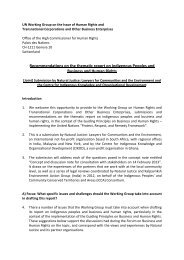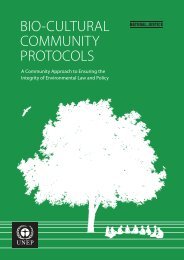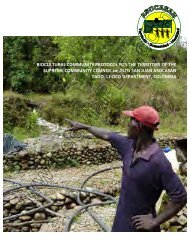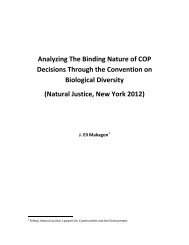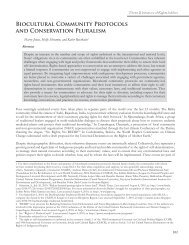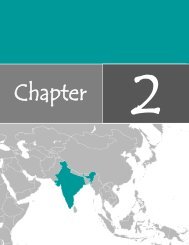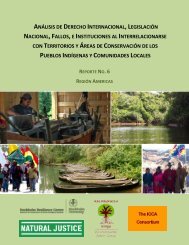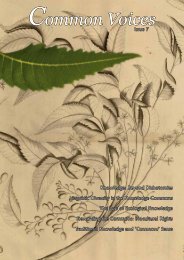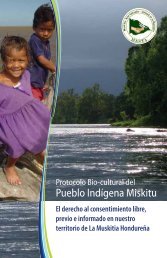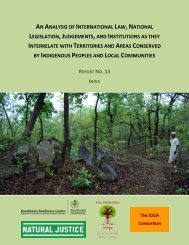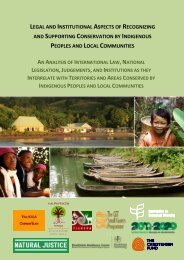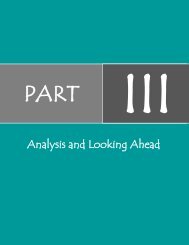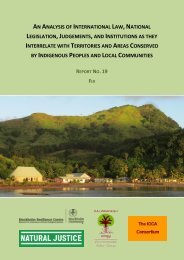Copy of bcp 18112011 English - Natural Justice
Copy of bcp 18112011 English - Natural Justice
Copy of bcp 18112011 English - Natural Justice
You also want an ePaper? Increase the reach of your titles
YUMPU automatically turns print PDFs into web optimized ePapers that Google loves.
The biocultural community protocol <strong>of</strong> maldharis <strong>of</strong> banniAnnexure -7OUR RIGHTS UNDER INTERNATIONAL LAW30We, Maldharis, in this Maldhari Biocultural Community Protocol identify the following principlesand rights based on international law:Principle 1:Maldharis are creators <strong>of</strong> breeds and custodians <strong>of</strong> their animal genetic resources for food andagriculture. Over the course <strong>of</strong> history, Maldhari have managed and bred livestock, selected andused them, thus shaping them, so they are well-adapted to our environment and its extremes.Keeping these breeds is a vital part <strong>of</strong> our culture and livelihoods. Yet these breeds and ourlivelihoods are under risk through loss <strong>of</strong> access to our traditional grazing lands. This hasendangered our food security and our way <strong>of</strong> life.As recognized in the Global Plan <strong>of</strong> Action for Animal Genetic Resources and the InterlakenDeclaration on Animal Genetic Resources, livestock keeping communities are thus the creatorsand custodians <strong>of</strong> the breeds that they maintain. We have therefore earned certaincustodianship rights over these breeds, including the right to decide how others use the geneticresources embodied in our breeds.Principle 1 is supported by:Point 9 <strong>of</strong> the Interlaken Declaration on Animal Genetic Resources recognizes that the “geneticresources <strong>of</strong> animal species most critical to food security, sustainable livelihoods and human wellbeingare the result <strong>of</strong> both natural selection, and directed selection by smallholders, farmers,pastoralists and breeders, throughout the world, over generations”.Point 12 <strong>of</strong> the Interlaken Declaration on Animal Genetic Resources recognizes “the enormouscontribution that the local and indigenous communities and farmers, pastoralists and animalbreeders <strong>of</strong> all regions <strong>of</strong> the world have made, and will continue to make for the sustainable use,development and conservation <strong>of</strong> animal genetic resources for food and agriculture”.Part I Point 10 <strong>of</strong> the Global Plan <strong>of</strong> Action for Animal Genetic Resources: “all animal geneticresources for food and agriculture are the result <strong>of</strong> human intervention: they have beenconsciously selected and improved by pastoralists and farmers since the origins <strong>of</strong> agriculture, andhave co-evolved with economies, cultures, knowledge systems and societies. Unlike most wildbiodiversity, domestic animal resources require continuous active human management, sensitiveto their unique nature”.



